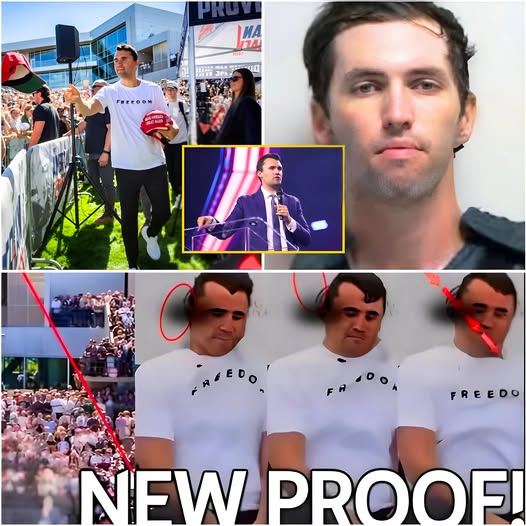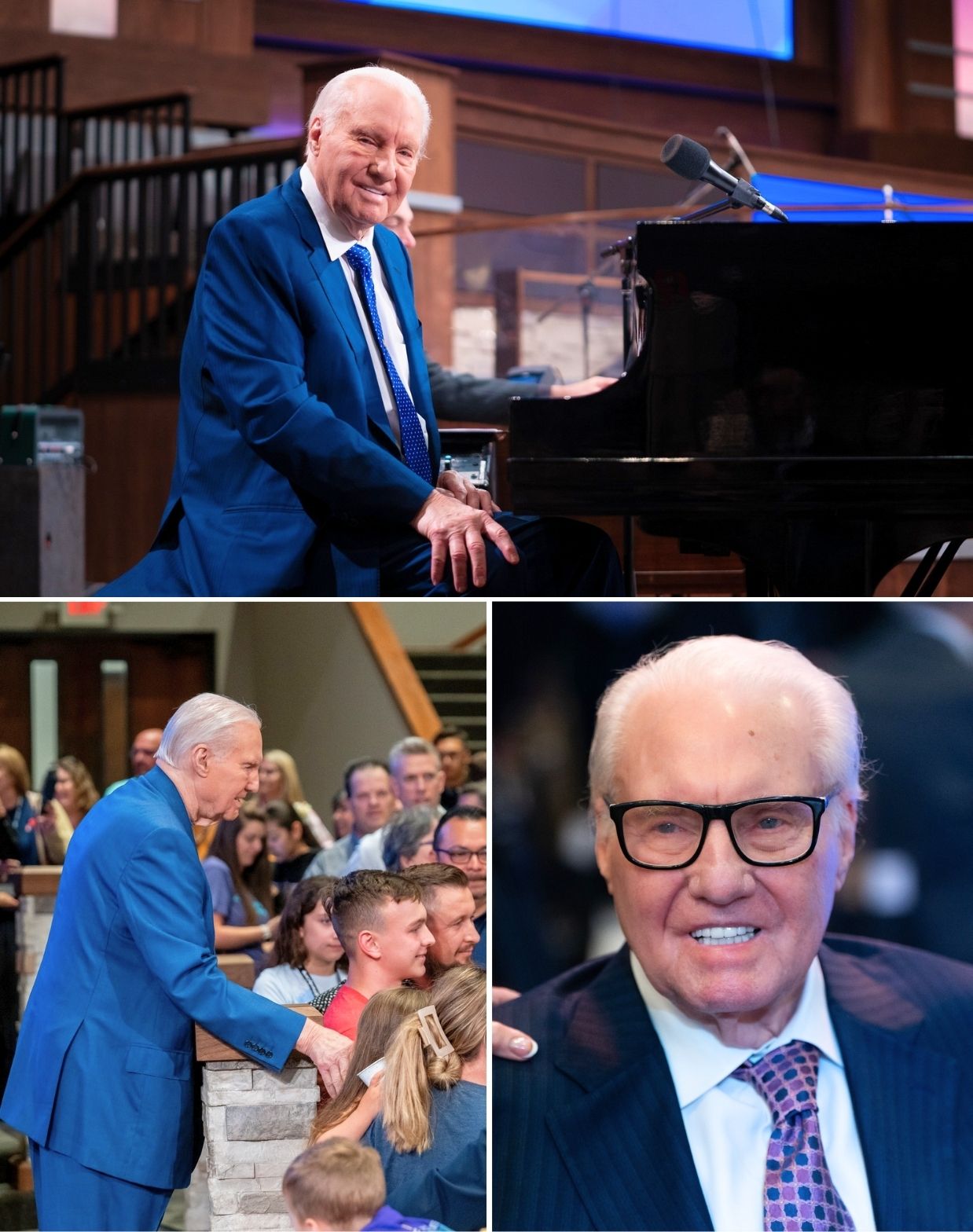The Veteran Who Broke the Charlie Kirk Shooting Investigation: How One Man’s Frame-by-Frame Analysis Changed Everything
In the chaos of the Charlie Kirk shooting investigation, the story that captured headlines and public outrage seemed settled. Viral footage circulated online, news outlets dissected every second, and millions formed opinions based on what they saw.
Yet, the narrative that many accepted as fact has now been disrupted—not by another journalist, politician, or pundit, but by a retired Navy veteran named David Hanlon.
Hanlon’s approach was quietly meticulous. Armed with two decades of experience in signal intelligence, he uploaded a 40-minute video analyzing the viral footage frame by frame. His work, precise, patient, and technical, revealed what he calls “micro-discrepancies”—minute glitches, repeated frames, and inconsistencies invisible to casual viewers. The implications are profound: the footage the world thought was a single continuous recording may not be.
This is not a conspiracy theory. This is an extraordinary example of observation, methodology, and expertise applied outside of government labs, in a public forum, forcing both experts and the general public to reconsider what they thought they knew about one of the most shocking events in recent history.
Who Is David Hanlon?
David Hanlon is not a household name. He never sought the spotlight, preferring decades of service behind the scenes in the U.S. Navy. For more than 20 years, he worked as a signals intelligence technician, analyzing encrypted communications, monitoring surveillance feeds, and identifying patterns that no one else could.
“In intelligence work,” Hanlon explained in a recent interview, “you learn to notice what isn’t there as much as what is. A microsecond delay, a shifted pixel, a recurring audio glitch—these are clues, often more telling than the obvious.”
His colleagues remember him as patient, analytical, and relentless in pursuit of clarity. After retiring, Hanlon maintained a quiet life, continuing to explore personal interests in video analysis and digital forensics. When the Charlie Kirk shooting footage went viral, he noticed anomalies within the first few minutes of review.
What distinguishes Hanlon is not merely his technical skill but his mindset. Unlike many who consume viral media passively, he approached the footage with the disciplined methodology of someone trained to find hidden truths in chaos. For him, every frame was data, every second potentially telling a story that the eye alone could not perceive.
The Viral Video and Its Importance
The footage of the Charlie Kirk shooting spread across platforms with lightning speed. Millions of viewers watched as events unfolded in what appeared to be real-time, editing creating a seamless narrative of what had occurred. Social media amplified the content, and news outlets repeated it, shaping public perception.
Yet, in the rush to understand, few paused to scrutinize the material itself. The narrative was already written: authorities had interpreted the video one way, media outlets amplified that interpretation, and the public consumed it as a single, continuous record of events.
Hanlon noticed that certain moments in the footage seemed slightly off—not enough to be obvious, but enough to warrant a deeper look. The inconsistencies were subtle: audio mismatches, lighting anomalies, repeated frames, and micro-second jumps that suggested edits or compilations. To most viewers, the video felt seamless. To Hanlon, it raised questions.
“It’s not about what people want to believe,” Hanlon says. “It’s about what the data actually shows, if you look carefully enough.”
The Methodology of Analysis
Hanlon’s method is rigorous. He slowed the footage to fractions of a second per frame, examining every pixel, shadow, and sound wave. Using specialized software, he was able to detect anomalies invisible in real-time playback.
Some of the key discrepancies he found include:
Frame Repeats and Jumps: Certain frames appeared to repeat multiple times, subtly altering motion in a way that could mislead casual viewers. In other sections, frames were missing entirely, suggesting that footage had been removed or stitched together.
Timestamp Inconsistencies: Digital timestamps within the footage sometimes jumped or overlapped, implying sections may not be chronologically contiguous.
Audio-Video Desynchronization: Hanlon identified microsecond mismatches between sound and movement, which could indicate either post-processing or technical artifacts.
Pixel-Level Glitches: Tiny distortions appeared at the edges of frames, often at critical moments in the footage, hinting at digital manipulation or compression anomalies.
These observations, while subtle, have profound implications. If the video is not continuous, the official timeline of the incident may need reconsideration. Events may have been presented in a misleading order, unintentionally or otherwise, raising questions about interpretation and media coverage.
Findings and Implications
The video analysis went viral in its own right. Millions of viewers watched Hanlon’s breakdown, captivated not by sensational claims but by methodical, evidence-based reasoning. Experts in video forensics began to weigh in, noting the thoroughness of Hanlon’s work and the credibility of his conclusions.
The implications are wide-ranging:
Challenging the Official Timeline: If the footage is compiled from multiple sources or interrupted by editing, it could affect how investigators reconstruct the sequence of events.
Public Perception and Media Responsibility: The viral nature of the original footage highlights how audiences often accept narratives at face value, even when subtle inconsistencies exist.
The Role of Independent Analysts:
Hanlon demonstrates that individuals outside official channels can contribute meaningfully to public understanding, particularly when equipped with the right expertise.
Hanlon’s work also raises broader questions about how society consumes video evidence. In an era of deepfakes, AI-generated content, and compressed social media uploads, careful observation is more critical than ever. The viral footage of the Charlie Kirk incident may have been accurate in spirit, but its technical discontinuities suggest caution in accepting every detail as literal truth.
Reactions from Authorities and Experts
Hanlon’s video has not gone unnoticed by authorities. While law enforcement agencies have been cautious in commenting publicly, some digital forensics experts acknowledge that his findings are “technically sound and worthy of further review.”
Others express skepticism. They note that micro-glitches can sometimes arise naturally from compression, transmission, or camera limitations. However, Hanlon’s repeated identification of multiple types of anomalies strengthens the argument that these are not random artifacts.
Legal analysts have suggested that, if further verified, Hanlon’s observations could play a role in ongoing investigations or litigation. At minimum, his work has forced investigators, journalists, and the public to revisit the footage with a critical eye.
The Broader Message
David Hanlon’s analysis offers a crucial lesson in observation, critical thinking, and patience. It is not about conspiracy; it is about approaching evidence with a methodology designed to uncover truth, no matter how inconvenient or counterintuitive.
In a media environment dominated by viral content and instant conclusions, Hanlon’s work is a reminder that careful, disciplined analysis remains invaluable. Ordinary citizens, too, can apply these principles: slow down, question what seems obvious, and pay attention to details others might overlook.
Hanlon’s final words in his video resonate widely: “Seemingly minor details can reveal major truths. Observation is a skill, and in the age of instant information, it is more important than ever.”
Conclusion
The Charlie Kirk shooting investigation may never be the same. A retired Navy veteran, quietly working from home with nothing but patience, software, and expertise, has challenged the assumptions underpinning public perception of one of the most shocking events in recent years.
Hanlon’s 40-minute video is more than an analysis; it is a case study in diligence, precision, and the power of independent expertise. Millions have watched and learned that viral footage, while compelling, must be approached with care, skepticism, and attention to detail.
In a world where information moves faster than verification, Hanlon’s work reminds us that truth often lies in the micro-details. The story of Charlie Kirk’s shooting is still unfolding, but one thing is clear: meticulous observation can redefine narratives, challenge assumptions, and hold even the most viral stories to account.
The Shockwave After the Analysis
In the weeks following David Hanlon’s quiet upload, the shockwave moved faster than anyone expected. At first, his video was shared within small online forums dedicated to open-source intelligence and digital forensics. Within days, it was trending across mainstream platforms, where millions debated whether the veteran’s findings represented a breakthrough—or an overreach.
But what distinguished Hanlon’s work from the countless amateur analyses floating online was tone. There was no shouting, no dramatic music, no emotional narration. Just a calm, methodical voice explaining technical details with the discipline of a teacher and the precision of a scientist. He never accused anyone, never declared conspiracy. Instead, he simply showed the data and let viewers draw their own conclusions.
The effect was magnetic. Psychologists have long observed that calm, rational delivery tends to inspire more trust than passionate argument—and Hanlon’s detached professionalism only amplified that. Viewers who might have dismissed emotional commentary found themselves leaning closer, watching each replayed frame, noticing the same flickers and mismatches he pointed out.
Soon, major outlets could not ignore him. Analysts from across fields—from journalism to engineering—were invited to respond. Some defended the integrity of the original footage, insisting that compression glitches could easily explain most of what Hanlon found. Others admitted, privately or publicly, that the patterns were too consistent to dismiss outright.
It was not just a debate about one piece of evidence. It was a debate about how we know what’s real.
Experts Step Into the Discussion
Dr. Lydia Moreau, a digital forensics researcher at the fictional Northbridge Institute of Technology, commented that Hanlon’s approach was “methodologically sound, if somewhat unconventional.”
“He applied exactly the kind of frame isolation and data synchronization analysis that our labs perform when verifying the authenticity of digital evidence,” she explained. “The fact that a private citizen, using public tools, achieved this level of detail is impressive. It suggests that democratized forensics—crowd analysis—could become a new layer of accountability in the information age.”

Her statement lit a spark. Across tech communities, new discussions erupted around the possibility that average citizens might soon assist or challenge official narratives through publicly verifiable data. Hanlon’s case became a test of that idea.
Meanwhile, independent journalists began conducting their own analyses, cross-referencing the footage with timestamps from witness videos, police scanner audio, and traffic surveillance feeds. Some of their findings aligned with Hanlon’s; others introduced new anomalies.
Every fresh observation deepened the mystery rather than solving it. But one consensus began to form: whether by editing, transmission error, or incomplete release, the viral footage did not represent a single, unbroken truth.
The Media’s Dilemma
For established media organizations, Hanlon’s findings posed an uncomfortable challenge. Traditional outlets rely on speed—being first to report, first to interpret, first to move on. Hanlon’s analysis slowed everything down. His forty-minute breakdown required patience, not headlines.
Editors faced a choice: acknowledge the anomalies and risk undermining earlier coverage, or ignore them and appear complacent. Some chose transparency, publishing careful pieces about “the growing questions around video continuity.” Others sidestepped the story altogether.
One senior producer at a major network, speaking anonymously, admitted: “Hanlon’s analysis reminded us that we sometimes mistake clarity for truth. A clean narrative feels satisfying—but real evidence is messy.”
That sentiment resonated with a generation of viewers tired of being told what to think. Hanlon, inadvertently, had reignited public appetite for slow journalism—the kind that investigates rather than reacts.
The Human Side of Precision
Despite the public fascination, Hanlon himself seemed unmoved by his sudden visibility. Friends describe him as modest, even shy, more comfortable discussing technical data than personal recognition.
When asked in a later interview about the attention, he replied simply, “I didn’t want to prove anyone wrong. I just wanted to understand what I was seeing.”
That restraint only enhanced his credibility. In an age when opinions often shout louder than facts, Hanlon’s quiet demeanor reminded people that truth-seeking can still be an act of humility.
But not everyone responded kindly. A wave of online criticism accused him of overanalyzing or seeking attention. Others attempted to discredit his background. Through it all, Hanlon refused to engage in personal disputes. “The data speaks for itself,” he said.
His calmness under fire—mirroring his composure during years of naval service—made his work all the more persuasive.
Candace Owens risks it all to expose betrayal. Her new revelations about Charlie Kirk’s death are shocking, and her tears tell a story no one expected!

Candace Owens risks it all to expose betrayal. Her new revelations about Charlie Kirk’s death are shocking, and her tears tell a story no one expected!
Candace Owens is risking everything.
Her voice trembled, her eyes filled with tears, and millions of viewers could sense the weight of what she was about to say. During a live broadcast on October 18, 2025, streamed from her Nashville home studio, Owens declared that “Charlie Kirk wasn’t just killed — he was betrayed.” Within minutes, #CandaceLeaks became the number-one trend on X, with millions of Americans replaying her words, frame by frame, searching for clues.
For months, the political world had treated Charlie Kirk’s death as a tragic but isolated act — a shooting that took place during a Turning Point USA event at Utah Valley University. But Candace Owens has now shattered that narrative, claiming the attack was no random act of violence. “He trusted the wrong people,” she said through tears. “Someone close to him gave away his location. Charlie never stood a chance.”

The Livestream That Shook the Right
The broadcast lasted over an hour. Owens began calmly, speaking about loyalty, friendship, and loss. But then her tone shifted. She leaned closer to the camera and said: “Before Charlie’s last event, he had planned an alternate exit — a private route that only a few staff members knew. That route was leaked. That’s not speculation; that’s a fact.”
The chat section exploded instantly. Viewers demanded names. Within minutes, clips of her statement were circulating across social media. Conservative groups were thrown into turmoil. Influencers, commentators, and even rival hosts weighed in — some applauding her courage, others accusing her of spreading conspiracy theories.

But then came the part that silenced everyone: she began to cry.
“He looked me in the eyes, two days before the event,” Owens said. “He said he felt like something was off. I told him not to worry. I will never forgive myself for that.”
The livestream ended abruptly after she read what she described as a “private message exchange” between two Turning Point USA insiders — messages that allegedly hinted someone had knowledge of Kirk’s “alternative route.” Owens didn’t reveal the senders’ full names but promised to hand everything over to investigators.
“Who Betrayed Charlie?”
By midnight, social media had exploded. The hashtag #WhoBetrayedCharlie was trending worldwide. People began digging into Turning Point USA’s leadership structure, posting screenshots, flight logs, and photos from the day of the tragedy. Dozens of posts claimed that “someone inside the organization” had been removed quietly a few days before the shooting.

The next morning, the Daily Mail, Newsweek, and the New York Post all reported on Owens’s broadcast. They cited unnamed sources confirming that “law enforcement is aware of newly surfaced digital evidence.” Meanwhile, the FBI’s public affairs office declined to comment, stating only that “the investigation remains ongoing.”
But Owens wasn’t backing down. Hours later, she posted on X:
“I said what I said. The truth always costs you something. But silence costs more.”
Her post received over 50 million views in less than 24 hours.
The Hidden Enemy
Owens’s words have thrown the conservative world into chaos. Turning Point USA has not released an official response, though several former staffers have come forward anonymously, claiming “internal tension” in the weeks leading up to Kirk’s death. One ex-employee told an online outlet that “there were serious disagreements over security procedures,” including “who was responsible for managing the exit points at major events.”

Tucker Carlson, a longtime ally of both Owens and Kirk, addressed the story on his own program that evening. “If what Candace says is true,” he said, “this isn’t just a scandal. It’s a betrayal at the heart of the movement.”
Even more unsettling were the whispers circulating in private conservative Telegram channels — messages claiming that “Candace’s data leak” contained not just texts but also “an audio file” captured from a private meeting held days before Kirk’s final appearance. According to online speculation, the file allegedly records a voice saying: “Don’t worry. He’ll never see it coming.”
No one knows whether the recording is real, but that hasn’t stopped millions from trying to find it.
The Evidence That Changes Everything
According to sources cited by independent journalists, the evidence Owens referred to came from “a compromised cloud account belonging to a former staff member.” That account reportedly contained message logs, time-stamped GPS data, and encrypted emails now being examined by cybersecurity experts.
Owens’s supporters claim the data proves someone inside Kirk’s circle intentionally leaked his route. Skeptics, however, warn that the material could be doctored. The FBI has neither confirmed nor denied the existence of the files.
Meanwhile, Turning Point USA’s legal team has issued a short statement urging “responsible reporting” and warning that “false information could compromise ongoing investigations.” Still, the silence from key figures — particularly those once closest to Kirk — has fueled even more suspicion.

Candace’s Emotional Confession
During the second half of the livestream, Owens seemed to let go of her usual composure. Her voice cracked as she recounted a private dinner she shared with Kirk and his wife just days before his death. “He was so optimistic,” she said. “He talked about expanding Turning Point globally. He said he felt unstoppable — except for one thing: he didn’t trust everyone around him anymore.”
Then, almost whispering, she added:
“He told me, ‘Candace, if something happens to me, it won’t be because of strangers.’”
The moment replayed millions of times across TikTok and X, generating an avalanche of reactions. Some commenters wrote that they “could feel her pain,” while others argued she was “deflecting guilt” or “creating drama.” But regardless of belief, everyone agreed: something about the story didn’t add up anymore.
A Political Earthquake
The timing of Owens’s claims could not be more explosive. With the 2026 election cycle looming, conservative power dynamics are already shifting. Insiders say her revelations could fracture alliances within the Republican movement, especially among donors and media figures who built their careers around Kirk’s influence.
Political strategist Mark Levine commented on Fox News: “If these accusations stick, this could reshape the entire conservative landscape. We’re talking about trust, loyalty, and betrayal at the highest level.”
Behind the scenes, several major conservative conferences scheduled for November have reportedly been postponed. Organizers fear that “internal tensions” could overshadow their events.

Silence and Speculation
As the internet dissects every word, Owens has gone quiet since the broadcast — no new posts, no interviews, no appearances. Some speculate she’s meeting with investigators. Others believe she’s gathering more proof before dropping “Part Two.”
Anonymous sources online claim that “a second flash drive” with additional evidence has been turned over to federal agents. No one knows what’s on it, but one cryptic post from an account believed to belong to a former Turning Point aide reads: “She wasn’t supposed to find that file.”
The Last Words
Near the end of her livestream, Candace Owens looked straight into the camera. Her voice was steady, but her eyes were wet.
“Charlie was a fighter. He believed in America. But the fight that killed him didn’t come from outside. It came from within. And now, I have to finish what he started.”
Those words have echoed across the internet ever since. In conservative chatrooms, the question is no longer “Who shot Charlie Kirk?” but “Who let it happen?”
And as the investigation continues, one thing has become painfully clear: the truth — whatever it is — may tear apart more than just friendships. It might expose a betrayal deep enough to change American politics forever.





